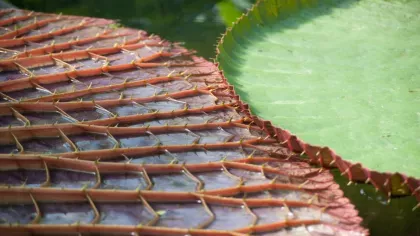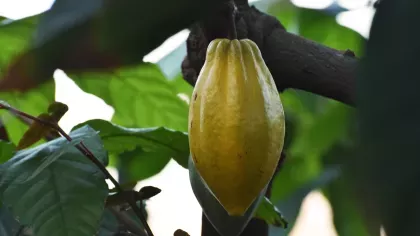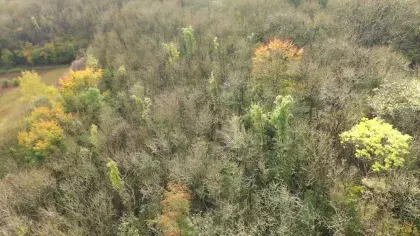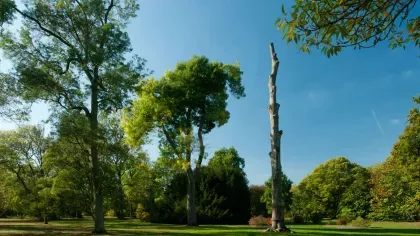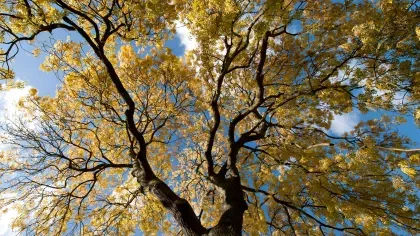
European ash
On this page
European ash is one of the most common trees in the UK, but it could soon be erased from our woodlands due to a highly infectious and devastating disease.
The disease attacking our beloved trees is called ash dieback and is caused by the fungus Hymenoscyphus fraxineus.
Most ash trees appear to be highly susceptible to the disease which leads to dieback of the tree crown, loss of leaves, bark lesions and eventually death of the whole tree.
The emerald ash borer (Agrilus planipennis) is another huge threat to the European ash.
These deadly, invasive beetles have decimated ash populations in the US and Canada and are now spreading into Europe.
Scientists at Kew, alongside global partners, are at the forefront of research on ash dieback and the emerald ash borer.
Plant description
Deciduous tree with pale brown bark and dark green leaves. The small, deep purple flowers have no petals, grow in dense clusters, and are wind pollinated. The winged fruits, known as ‘keys’, dangle from the tree’s branches.
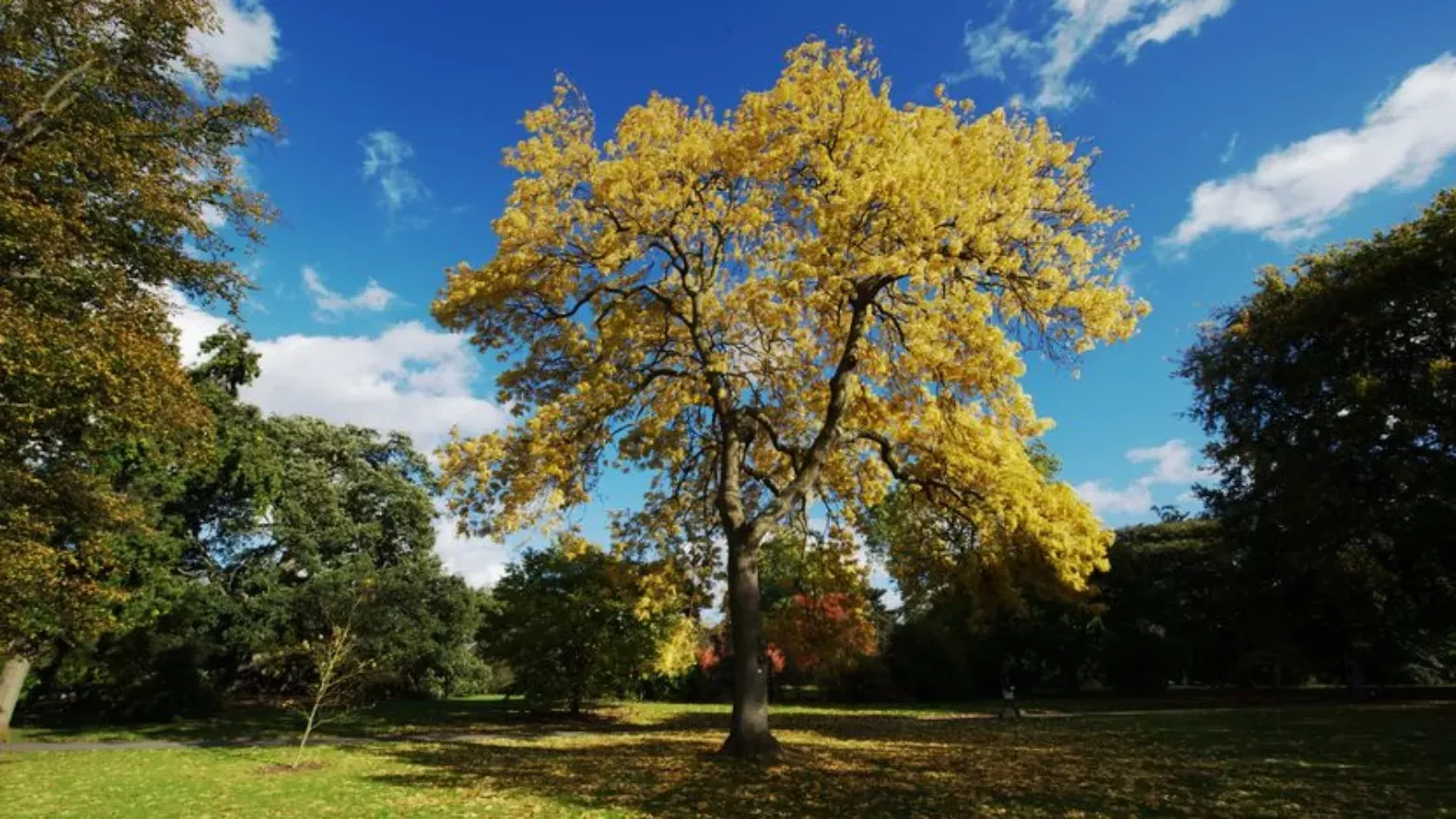
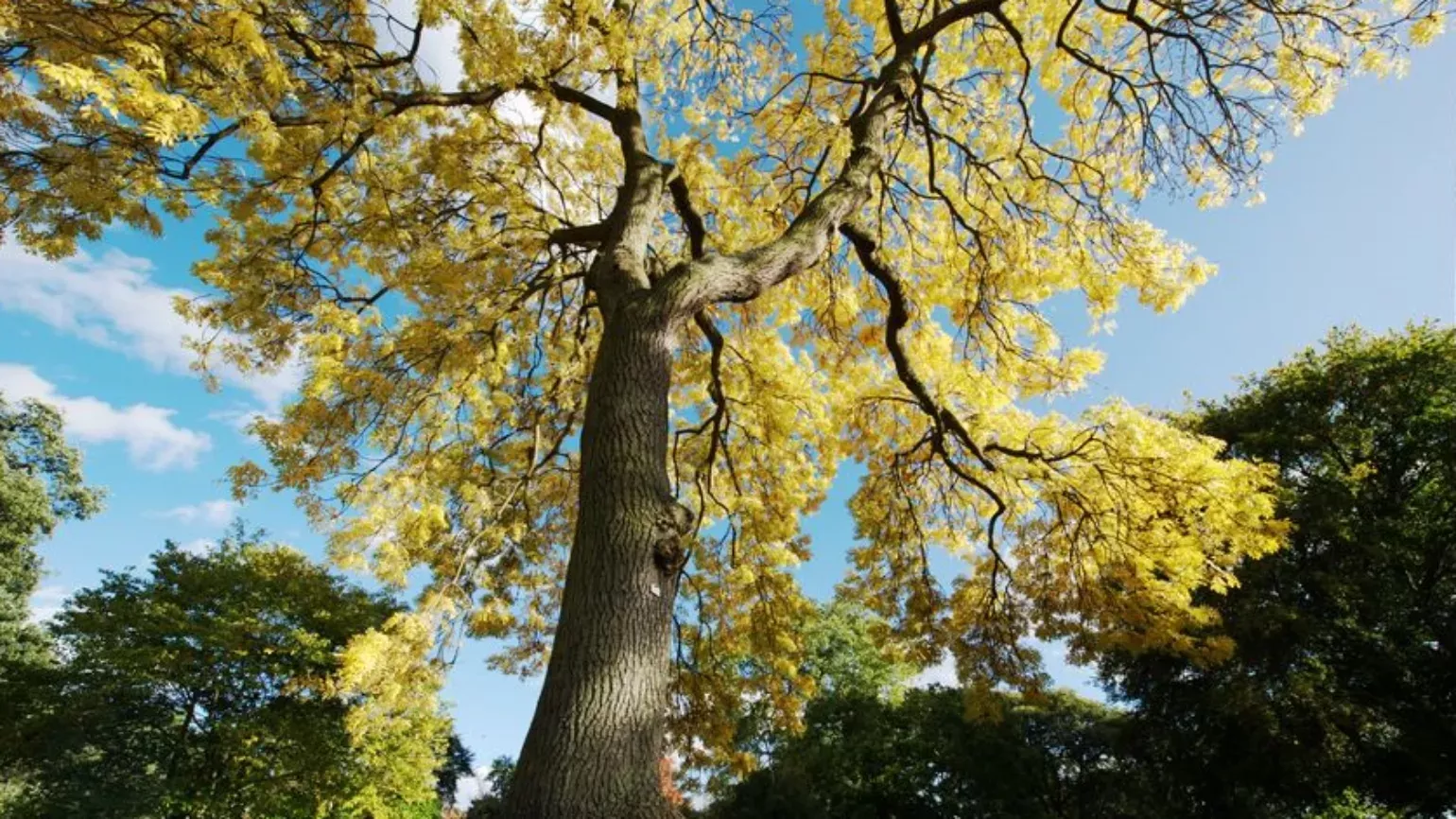
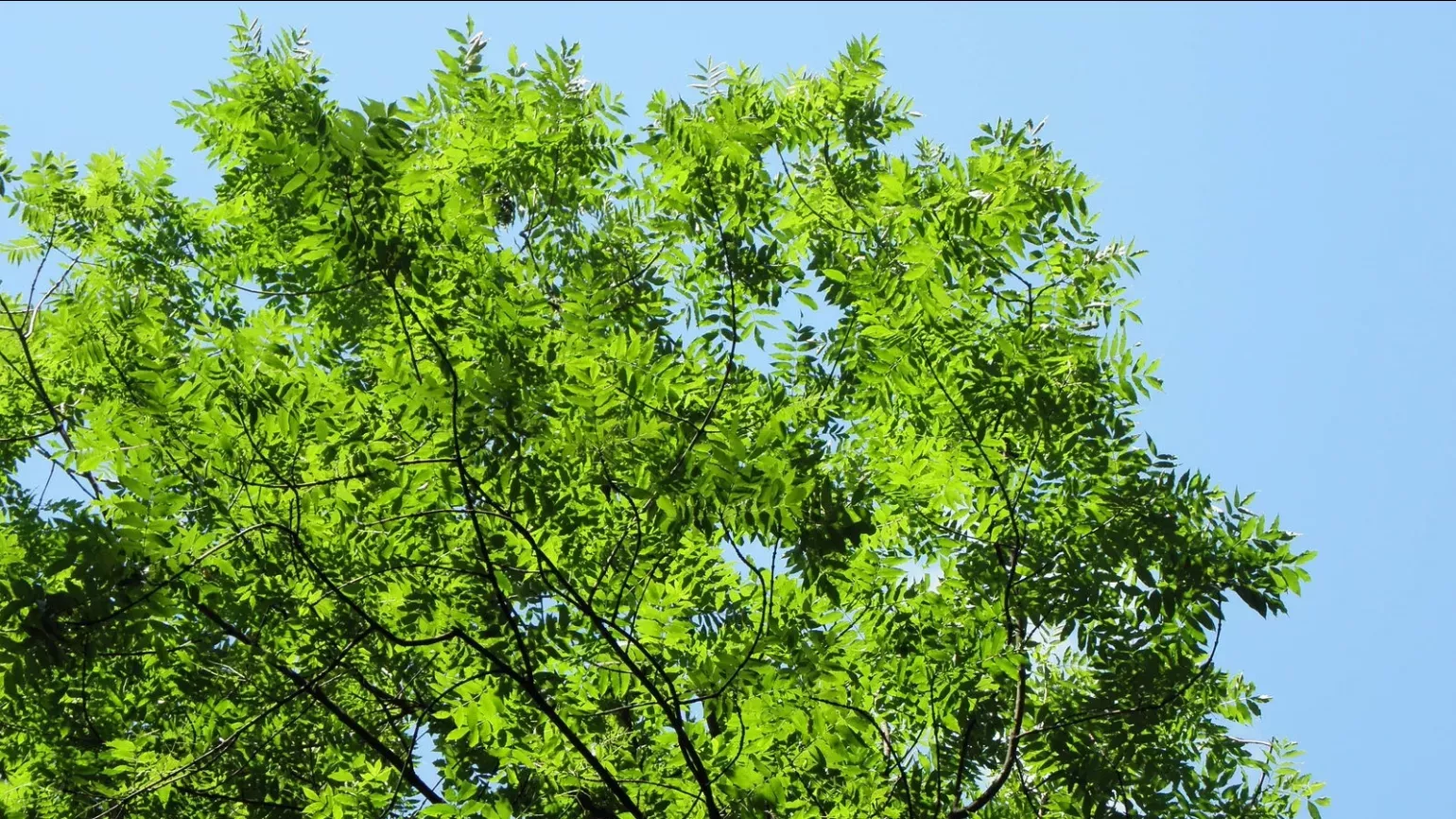
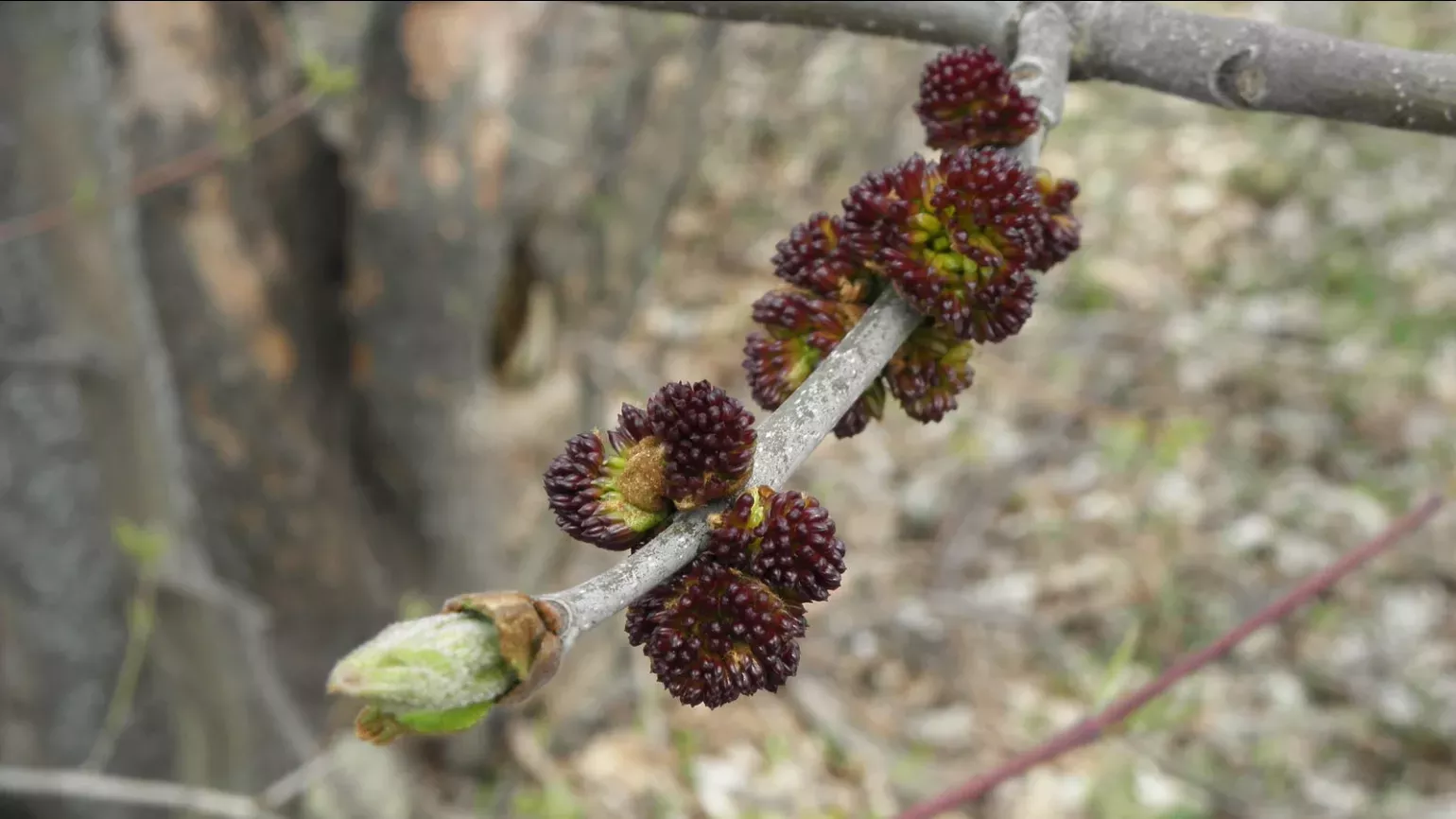
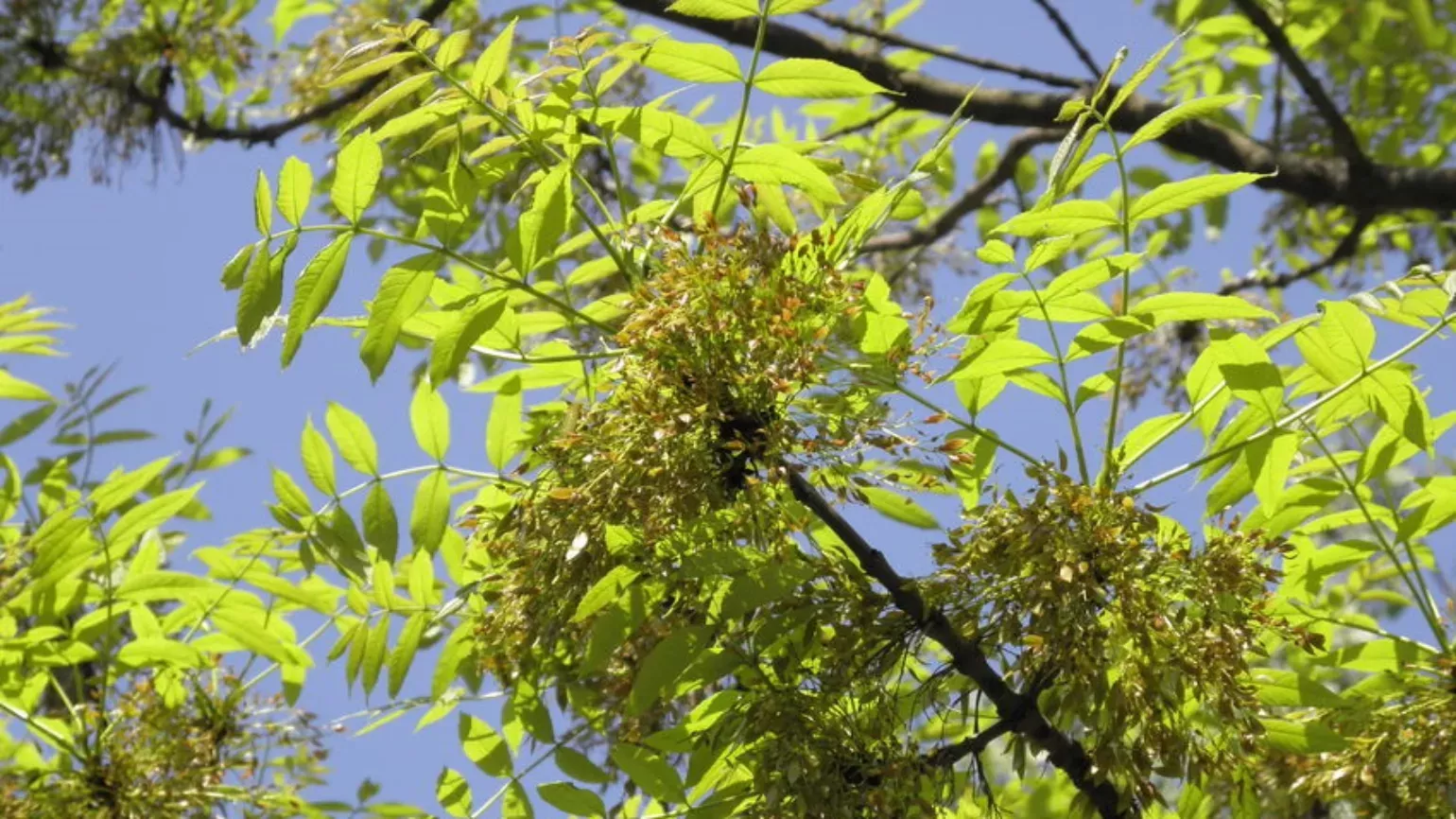

Plant uses
Cultural
European ash is grown as an ornamental tree in parks and large gardens. It is widely used for urban landscaping as it tolerates pollution and exposed sites.
In Norse mythology, an ash tree supported the universe, and the first man was said to have been carved from its wood.
The wood from European ash trees used to be burned to ward off evil spirits.
Food and drink
European ash leaves are edible and nutritious to animals and have been used to feed livestock in Scandinavia.
Health
European ash has been used in traditional herbal medicines. Its bark was used to treat fevers, its leaves were used to treat gout and enhance urinary and digestive function, and its sap was used to treat earaches.
Materials and fuels
European ash produces strong and elastic wood which is used for tools, firewood, furniture and sporting equipment like tennis racquets, cricket stumps and hurling sticks.
Did you know?
European ash has a large native range. It is the most widely distributed ash species in Europe, found in all European countries except Portugal.
European ash is the third most common tree in the UK. It is a vital part of Britain’s woodlands, providing food and homes for many species. It is also an important player in the water systems, helping prevent floods and filter water.
Ash dieback is a major threat in the UK; it is predicted to kill over half of the around 150 million ash trees across the country.
Emerald ash borer could cost the US over $300 billion on dead tree removal and forest repair.
Where in the world?

Forests, woodland, shrubland, and hedgerows in moist, well-drained, lime-rich soils.
Find it in our gardens
Kew Gardens
A botanic garden in southwest London with the world’s most diverse living plant collection.
Location
Arboretum and Natural Area.
View map of Kew GardensBest time to see
Our work
The fungal disease, ash dieback, is severely threatening Europe's woodlands.
Spores from the fungus Hymenoscyphus fraxineus start growing on ash leaves, then spread to the twigs and cause death of the wood. Once the fungus enters the trunk, it kills the whole tree.
The fungus blocks movement of water and nutrients through the tree which leads to significant leaf loss, bark lesions and dieback of the tree crown.
Not only will ash dieback result in loss of ash trees across Europe, but it will also impact hundreds of species that grow in the same ecosystems. Over 950 species are associated with European ash trees, 44 of which are only found living on these trees.

Emerald ash borer (Agrilus planipennis) also block the transport of water and nutrients through ash trees. The beetle larvae burrow into the bark, feed on important tissues, and cause extensive damage to the tree, often leading to its death.
Like ash dieback, dying branches and leaves from the tree crown are a sign of damage caused by the emerald ash borer.
Whilst it has had catastrophic consequences for North American ash species, further research is required to determine how susceptible European ash trees are to emerald ash borer.
Scientists from the Plant Health team at Kew, alongside worldwide collaborators, are conducting cutting edge research on ash dieback and emerald ash borer. Their work aims to understand how some ash trees resist these threats.
Our scientists have sequenced the DNA of healthy and unhealthy European ash trees and studied genes associated with ash dieback.
They are mapping the future severity of ash dieback and have shown that a breeding programme could accelerate the evolution of resistance to this disease in natural populations.
They have also sequenced the complete set of genes (whole genomes) of 24 species of ash from across the world and identified genes related to emerald ash borer resistance.
This research may help restore diseased woodlands and ensure ash trees remain present in the European landscape into the future.
Another research project at Kew is helping to save European ash trees by collecting seeds from trees across eastern and central England – the regions under highest threat from ash dieback – and conserving them in our Millennium Seed Bank.

